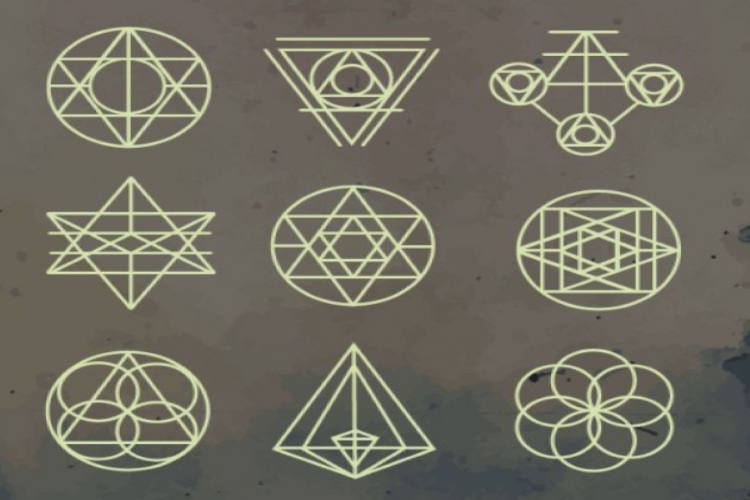Do you know who the father of geometry is? Well, if no, the answer is Euclid. He was well known for his 13 volumes of books of geometry that contain all the theories and assumptions. He opened all the possibilities of learning geometry in one place! But that doesn’t mean he was the first man to discover geometry.
Geometry has been a part of human life since human existence. With human civilisation and the growth of scientific knowledge, people started becoming aware of it. Till now, it has been used extensively, and we have come a long way studying it! Geometry involves studying shapes, and you can easily see some great and unique shapes in your surroundings.
Why is it Important for Children to Learn Basic Geometry Concepts?

If you answer that it’s part of the academic curriculum, then you are partially right. The first and foremost reason is Geometry is a part of one’s everyday life. One should know what shapes and sizes are, how to measure the dimensions, how to measure the weight and what the units are.
The second reason is it helps develop basic skills such as decision-making, logical reasoning, comprehension and understanding the arrangements of figures in dimension.
In this article, we will see how easily geometry concepts are explained to children.
Read Also Interesting and Amazing Facts about Moon: Fun Facts about Your Kid’s Night Friend
Basic Geometry Concepts
Before moving towards the basic concepts of geometry, let us first understand what geometry means? The word geometry comes from the Greek word ‘geometron’. Here the term ‘geo’ means earth like in geography or geology and the term ‘metron’ means measurement, which clears the meaning pretty much, measurement of the earth (not the whole earth but the structures present and made here).
The First Three Basic Geometry Concepts Explained for Kids

#1. Point
We all know what points are, right? And we can easily represent it by a dot. It has no dimension and no mass at all. But, the main question is, what is the purpose of a dot if it neither has dimensions nor mass? It illustrates the exact position of a thing.
An example could be making a graph. What do we use here to show a position? A point, right? It is also the most basic of all the shapes and figures on the earth.
#2. Lines
The line is a straight figure without any curve, which extends continuously in the space. It is unidimensional, only having a length. Since it’s continuous, the term line segment defines a part of a line that has a finite length. Dots or points represent the endpoints.
There is another type of line, ray. One end is fixed (shown by a dot) while the other end is continuous (an arrow indicates the infinity). Rays are used in showing angles.
We use a scale to measure a line segment and a protractor to measure an angle formed by rays.
#3. Plane
The flat surface, which goes forever in every direction, is known as a plane. Take a paper and draw things on it. What do you see? You can only draw left and right (horizontal) or up and down (Vertical) in the paper. This shows planes are two-dimensional. Since a plane is infinite, a plane segment is a part of it that is finite.
Ask your kids to look out the plane surfaces in your house. It would be a fun way to teach them about plane surfaces.
Now, let’s read some other basic geometry concepts.
Some Other Geometry Concepts for Kids
#1. Polygons
When we form a closed figure made of more than two line segments, it is called a polygon. It is a plane in nature, i.e., two-dimensional. Some examples are triangle, square and rectangle. Their area and perimeter can be calculated easily by formulas.
Let us see the formulas of the area and volume of the polygon mentioned in the example.
Triangle (Made of Three Lines)
Triangles are of three types, an equilateral triangle having all three sides equal, an isosceles triangle having two equal sides and a scalene triangle having no equal sides.
The formula to obtain the area of a triangle:
Area = ½ x Length of the base x height
For example,
Length of the base = 5 cm
Height of the triangle = 6 cm
Therefore,
Area = ½ x 6 cm x 5 cm
=> 15 cm2 (Note, that the units are also multiplied)
The formula to obtain the perimeter of a triangle:
Perimeter = Sum of the length of all the lines of the triangle
For example,
The lengths of the triangle are 6 cm, 7 cm and 10 cm.
Therefore,
Perimeter = (6 + 7 + 10) cm
=> 23 cm
Square (Made of Four Equal Lines)
The formula to obtain the area of a square is:
Area = (length of the side)2
For example,
Length of the side = 4 cm
Therefore,
Area = (4 cm)2
=> 4 cm x 4 cm
=> 16cm2
The formula to obtain the perimeter of a square:
Perimeter = Sum of all the sides of the square or 4 x (Length of the side)
Let’s take the above example to obtain the perimeter.
Perimeter = 4 x 4 cm
=> 16 cm
Rectangle (Made of Four Lines, the Opposite Sides are Equal to Each Other)
The formula to obtain the area of a rectangle:
Area = Length x breadth
For example,
Length = 7 cm
Breadth = 9 cm
Therefore,
Area = 7 cm x 9 cm
=> 63 cm2
The formula to obtain the perimeter of a rectangle:
Perimeter = Sum of all the sides of the rectangle or 2 x (Length + breadth)
For example,
Length = 7 cm
Breadth = 9 cm
Perimeter = 2 x (7 + 9) cm
=> 126 cm
#2. Curved Surfaces
Some shapes have curved outlines. One of the common examples is a circle.
The formula to obtain the area of a circle:
Area = π x (radius)2
Let’s find out the area of a circle having a radius of 8 cm.
Area = π x(8 cm)2
=> 201.06 cm2
The perimeter of the circle is commonly known as the circumference.
Circumference = 2 x π x radius
Let’s find out the circumference of a circle having a radius of 8 cm.
Circumference = 2 x π x 8 cm
=> 50.26 cm
Conclusion

We hope that you find this geometry concept for kids article helpful. Although that’s not all about these concepts, there’s a lot more. To check out more concepts and formulas visit the website of Real School Of Montessori. We also offer fun, rewarding games related to basic geometry concepts for children.
Check the masterclasses we regularly organise for children to excel in their studies!
Read Also Biological Facts about The Human Body: Facts to Shape Your Kids Brain







